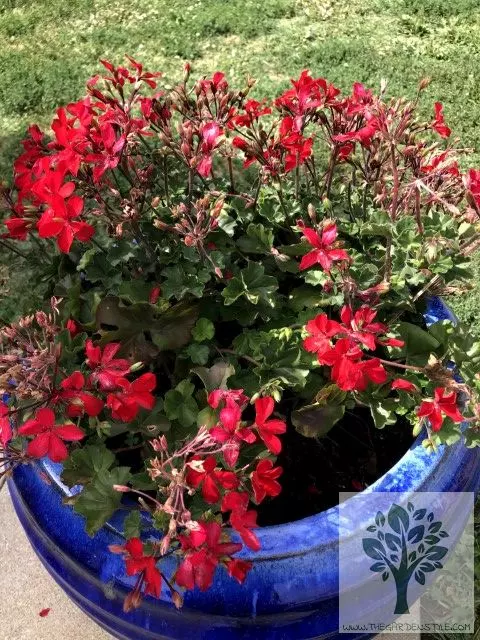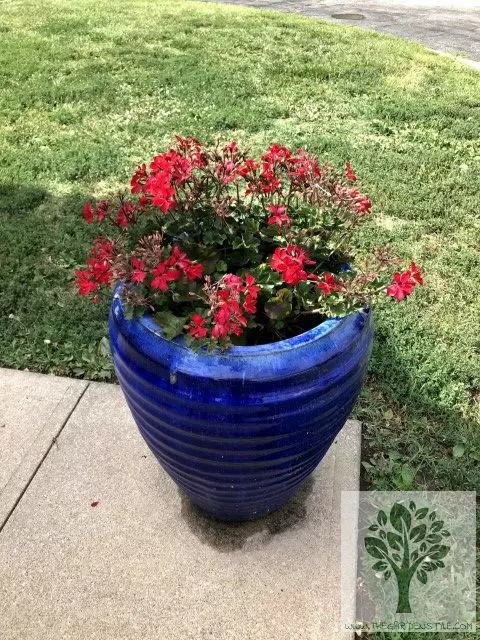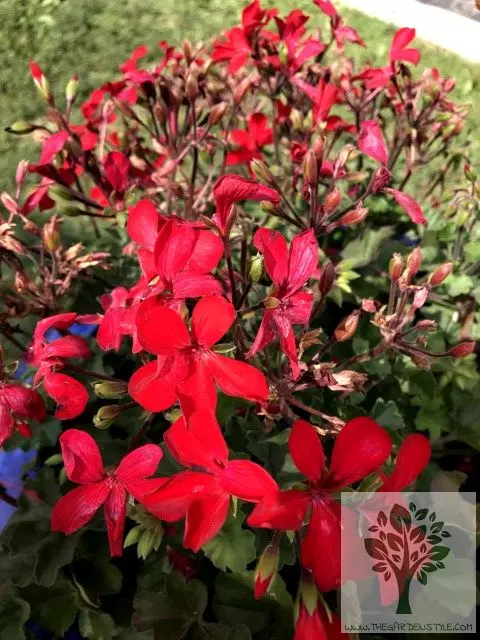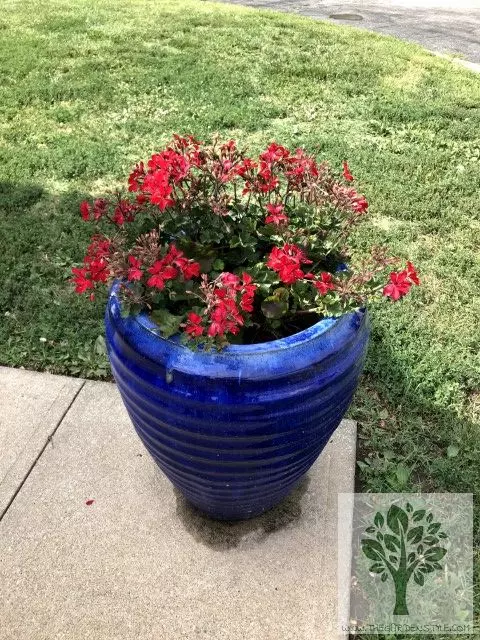Geraniums are not difficult plants to grow, but the more love and care you give them, the more beautiful they will be. Learn all about how to care for potted geraniums in this article.
With more than 240 varieties, the pelargonium (in its scientific meaning), in temperate climates can bloom all year round. If we want to grow potted geraniums in a healthy way, we must take extreme care of them during their growth stage. In this way, we will be able to achieve that all our exterior shines thanks to the beautiful flowers of the geraniums. And is that, it is advisable that geraniums are outdoors. According to Feng Shui, it is better to avoid these plants indoors.
Table of Contents
How to Care for Potted Geraniums
As we said before, geraniums are not difficult to take care of, here we will tell you how to care for potted geraniums.

Light for Potted Geraniums
Like roses, geraniums love the sun. Geraniums need to receive direct sunlight for at least 6 hours a day. If you want to grow geraniums full of flowers, you need a south-facing window, balcony, or terrace. Correct lighting is very important for the care of potted geraniums.
Temperature for Potted Geranium
Geraniums are plants that come from warm regions and do not tolerate cold. In places where the thermometer drops to 32 °F (0 °C), potted geraniums should be protected in winter. If you live in an area where the summer temperature exceeds 90 °F (32 °C), a tip on how to plant geraniums is to place them in partial shade.

Soil for Potted Geraniums
The potted geraniums require well-drained and well-fertilized soil. In pots, a universal substrate can be used. Applying compost to the soil is perfect to give the plant an extra boost. Make sure the pot always has good drainage.
The important thing for the proper care of potted geraniums is that the soil is well-drained and fertile.
- NUTRIENT RICH & INDOOR/OUTDOOR FAST GERMINATION… Wonder Soil Premium Organic Potting Soil Mix is the only dry compressed coco coir mix with added amendments of worm castings, mycorrhizae, kelp, perlite and more! Grow your plants faster with stronger roots! Peat free, all natural, family and pet safe!
Watering for Potted Geraniums
An important tip on how to care for potted geraniums is that geraniums do not need frequent watering. You should water your geraniums a couple of times a week during the spring and summer. In autumn, a weekly watering will suffice. In winter, occasional watering is enough.

Fertilizer for Potted Geraniums
Geraniums are most often in pots about 12″ to 16″ (30-40 centimeters) in diameter. In this case, it is advisable to fertilize potted geraniums in the spring-summer season. In addition, there will come a time when there will be no need to repot geraniums since they are relatively small plants and won’t develop long roots.
As for the fertilizer, for potted geraniums, we can choose between a solid and liquid fertilizer. The ideal is to start applying fertilizer at the beginning of spring, although it can also be done throughout the summer, with a frequency of once a month. These are some types of fertilizers recommended for potted geraniums:
- Organic fertilizers. Any can be used for geraniums: compost, humus, green manure, guano, manure…. Just pour a handful per plant and mix it with some more soil.
- Fertilizers (chemical fertilizers). They are used to make geraniums bloom. It is recommended to use one per plant, and that it is, above all, specific for geraniums. It is important to always read well the label of each fertilizer to know how many doses to apply.
Fertilizing potted geraniums is very important for proper care of potted geraniums and flowering. For years, we’ve relied on a 15-15-15 NPK fertilizer for our geraniums, consistently yielding excellent results.
- Our Geranium balanced fertilizer promotes strong root growth and bud set.
How to Prune Geraniums
Geraniums tolerate pruning well. You should cut back branches at any time of the year to fix their shape. Cutting off the end of a branch will cause it to send outside shoots and form more stems and more flowers.
In late winter or early spring, you should prune your potted geraniums almost to the ground when the plants have no vegetative growth. This is a good way to rejuvenate old potted geraniums or try to save plants affected by the geranium butterfly.
Most Common Potted Geraniums Pests and Diseases
Some pests can affect potted geraniums quite badly:
African butterfly (also geranium borer). These insects are usually found in warmer seasons, with an average temperature of about 68 °F (20 °C). The main problem of this butterfly is that its invasion is silent. Indeed, it does not cause direct damage, but, if it deposits its eggs, caterpillars may appear and affect the stems. In this case, the first thing to do is to remove the damaged and invaded parts of the geranium and apply a specific insecticide. A trick: to prevent the appearance of these pests is to use preventive insecticides, to take care of geraniums.
Geranium whitefly: these insects damage the leaves with their bites (very visible due to the intense greenness of geranium leaves). Another way to detect this pest is if the underside of the leaves has white cottony dots, which are the larvae of the whitefly. They can be removed by hand or using neem oil, which is organic.
Spider mite: this pest feeds on the sap of geranium leaves, which produces small yellow spots, causing the leaf to curl and then dry out. To avoid this pest, it is best to apply an insecticide during the colder months.
Geranium rust: this disease causes yellow spots to appear on the leaves, similar to pustules. These, after 15 days, burst, releasing a series of spores that eventually kill the plant. To prevent it, use a fungicide and get rid of the plant before the pustules open to avoid affecting other geranium bushes.
Leaf spot: With this disease, you will see watery, blister-like spots on the older leaves of your geranium that spread across the leaves. To solve it, remove the infected leaves and apply a chemical treatment with fungicides.
Gray rot (botrytis): this fungus appears in conditions of excessive humidity. You will notice it if the tissues begin to soften with gray and bluish spots. To treat it, apply a fungicide.




